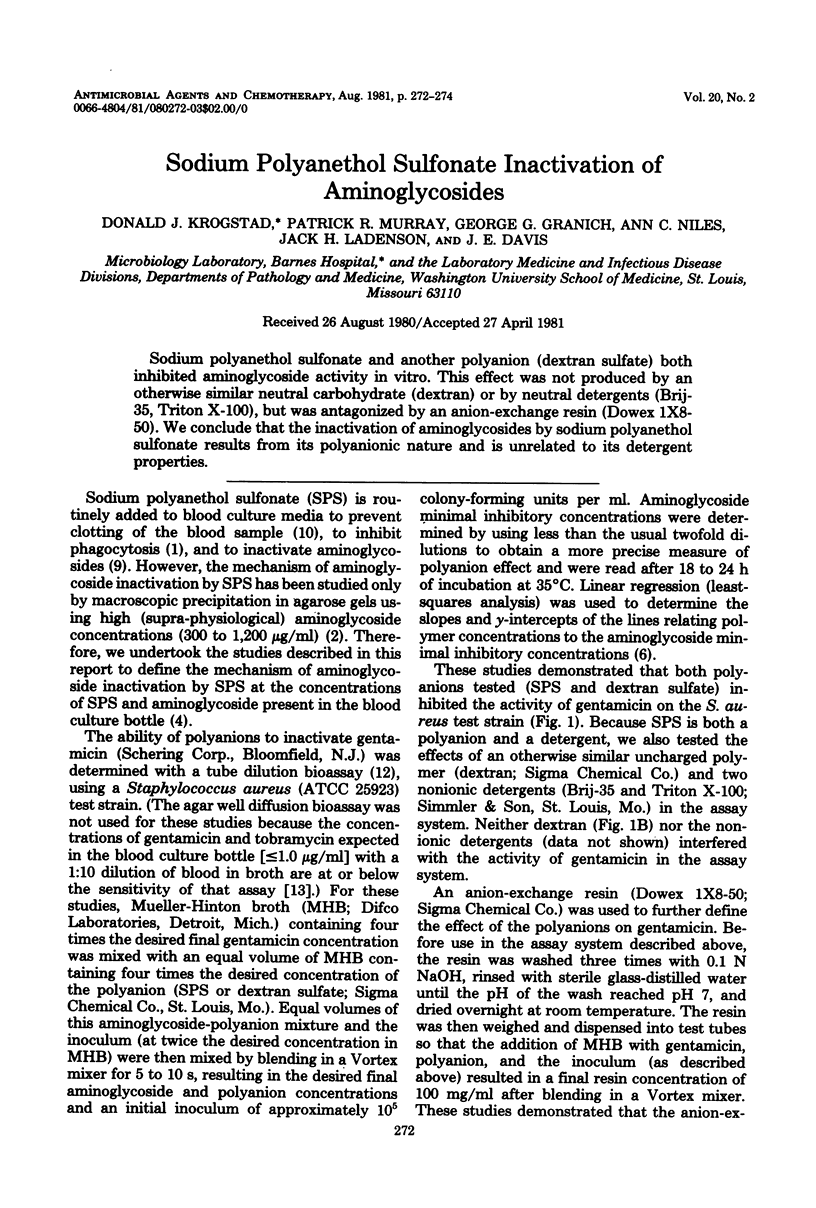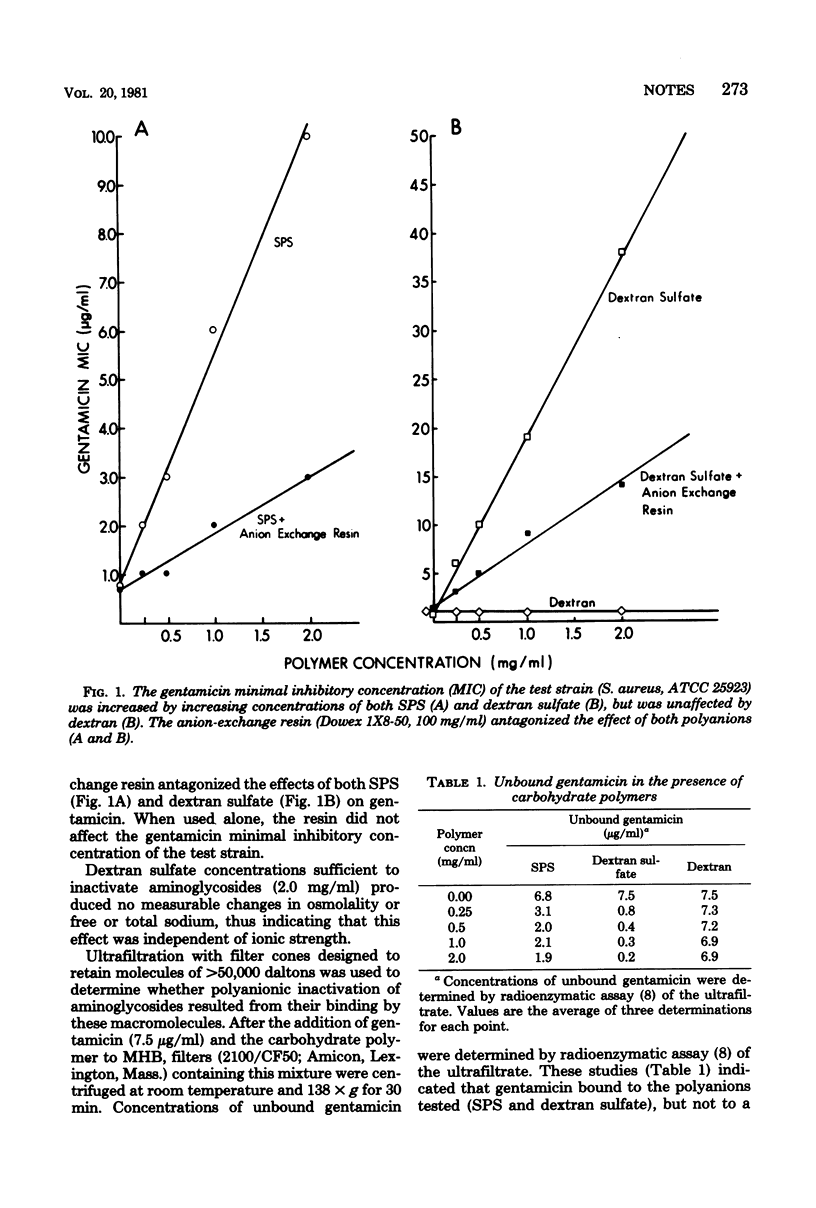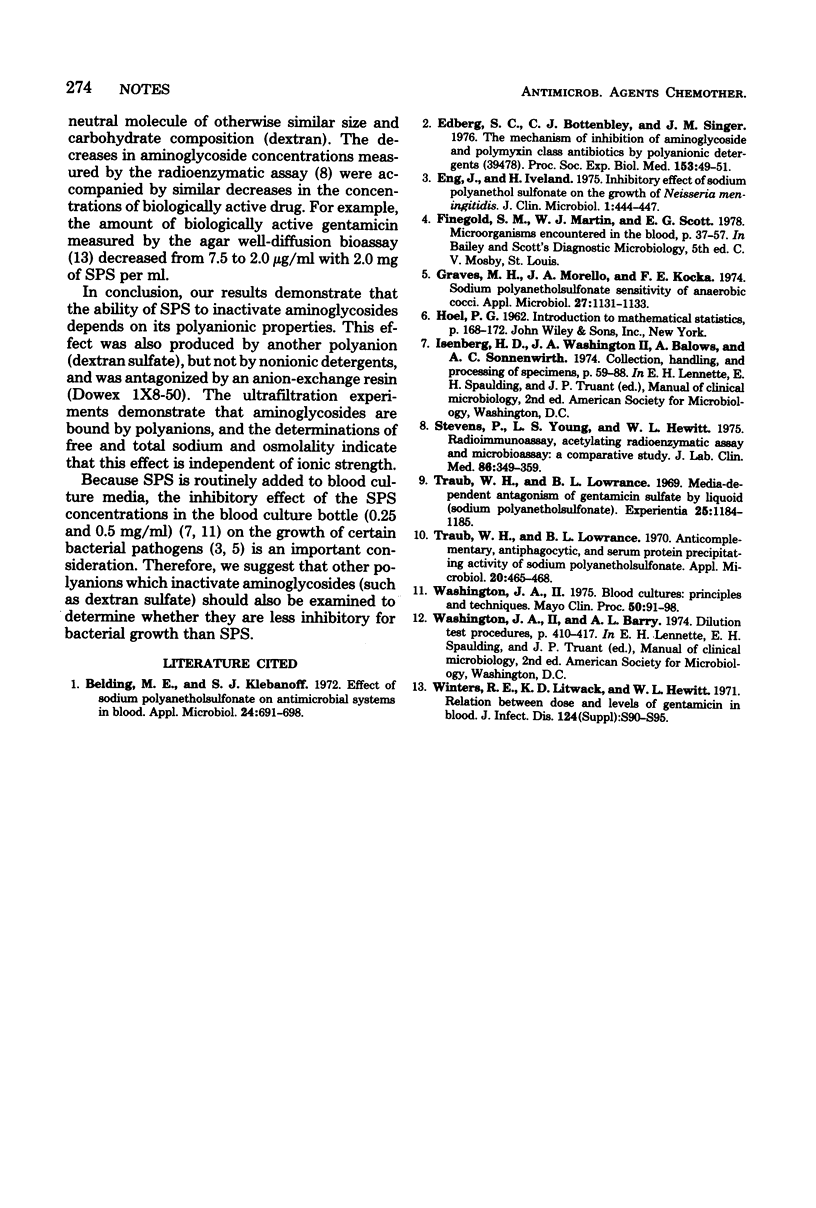Abstract
Sodium polyanethol sulfonate and another polyanion (dextran sulfate) both inhibited aminoglycoside activity in vitro. This effect was not produced by an otherwise similar neutral carbohydrate (dextran) or by neutral detergents (Brij-35, Triton X-100) but was antagonized by an anion-exchange resin (Dowex 1X8-50). We conclude that the inactivation of aminoglycosides by sodium polyanethol sulfonate results from its polyanionic nature and is unrelated to its detergent properties.
Full text
PDF


Selected References
These references are in PubMed. This may not be the complete list of references from this article.
- Belding M. E., Klebanoff S. J. Effect of sodium polyanetholesulfonate on antimicrobial systems in blood. Appl Microbiol. 1972 Nov;24(5):691–698. doi: 10.1128/am.24.5.691-698.1972. [DOI] [PMC free article] [PubMed] [Google Scholar]
- Edberg S. C., Bottenbley C. J., Singer J. M. The mechanism of inhibition of aminoglycoside and polymyxin class antibiotics by polyanionic detergents. Proc Soc Exp Biol Med. 1976 Oct;153(1):49–51. doi: 10.3181/00379727-153-39478. [DOI] [PubMed] [Google Scholar]
- Eng J., Iveland H. Inhibitory effect in vitro of sodium polyanethol sulfonate on the growth of Neisseria meningitidis. J Clin Microbiol. 1975 May;1(5):444–447. doi: 10.1128/jcm.1.5.444-447.1975. [DOI] [PMC free article] [PubMed] [Google Scholar]
- Graves M. H., Morello J. A., Kocka F. E. Sodium polyanethol sulfonate sensitivity of anaerobic cocci. Appl Microbiol. 1974 Jun;27(6):1131–1133. doi: 10.1128/am.27.6.1131-1133.1974. [DOI] [PMC free article] [PubMed] [Google Scholar]
- Stevens P., Young L. S., Hewitt W. L. Radioimmunoassay, acetylating radio-enzymatic assay, and microbioassay of gentamicin: a comparative study. J Lab Clin Med. 1975 Aug;86(2):349–359. [PubMed] [Google Scholar]
- Traub W. H., Lowrance B. L. Anticomplementary, anticoagulatory, and serum-protein precipitating activity of sodium polyanetholsulfonate. Appl Microbiol. 1970 Sep;20(3):465–468. doi: 10.1128/am.20.3.465-468.1970. [DOI] [PMC free article] [PubMed] [Google Scholar]
- Traub W. H., Lowrance B. L. Media-dependent antagonism of gentamicin sulfate by Liquoid (sodium polyanetholsulfonate). Experientia. 1969 Nov 15;25(11):1184–1185. doi: 10.1007/BF01900265. [DOI] [PubMed] [Google Scholar]
- Washington J. A., 2nd Blood cultures: principles and techniques. Mayo Clin Proc. 1975 Feb;50(2):91–98. [PubMed] [Google Scholar]
- Winters R. E., Litwack K. D., Hewitt W. L. Relation between dose and levels of gentamicin in blood. J Infect Dis. 1971 Dec;124 (Suppl):S90–S95. doi: 10.1093/infdis/124.supplement_1.s90. [DOI] [PubMed] [Google Scholar]


